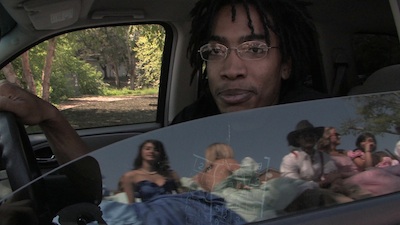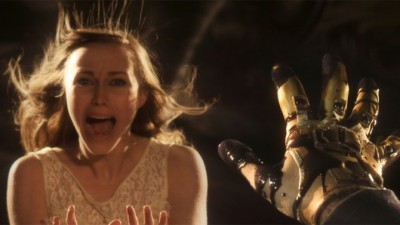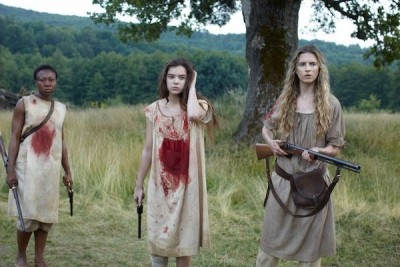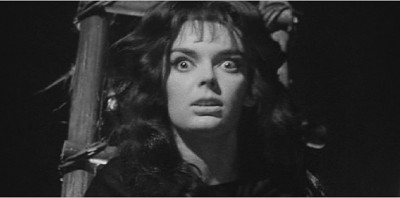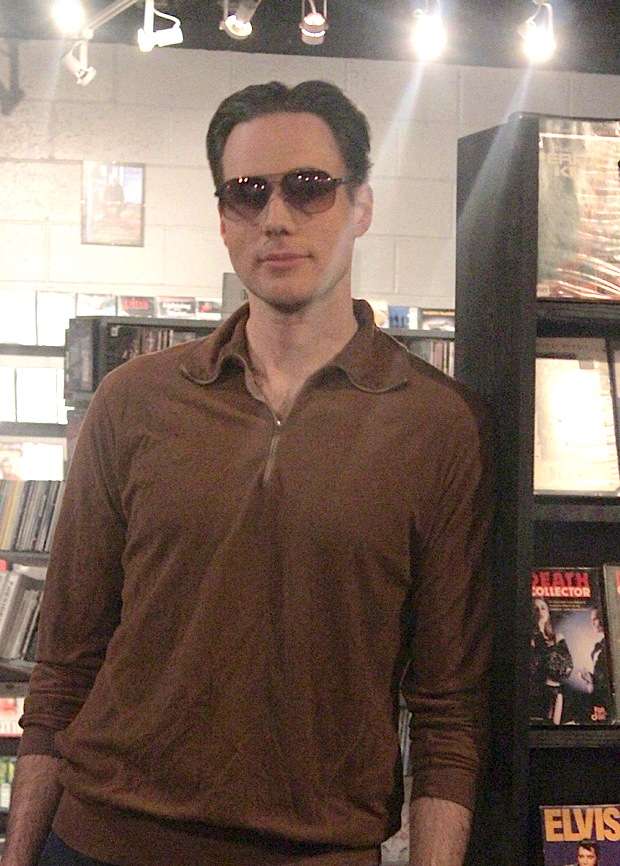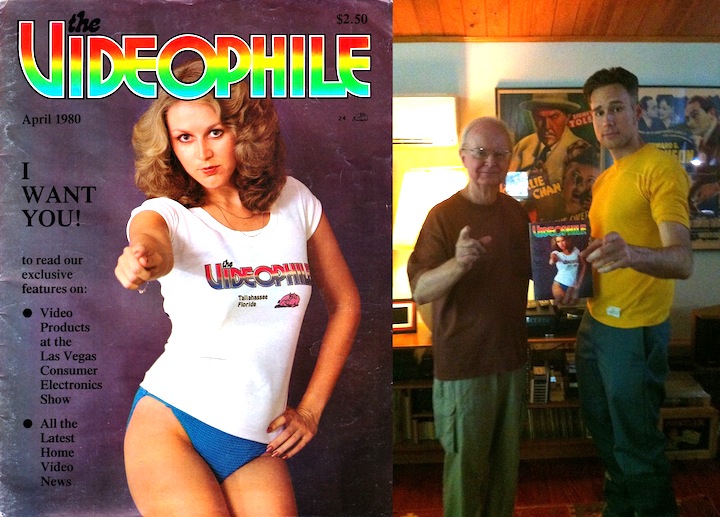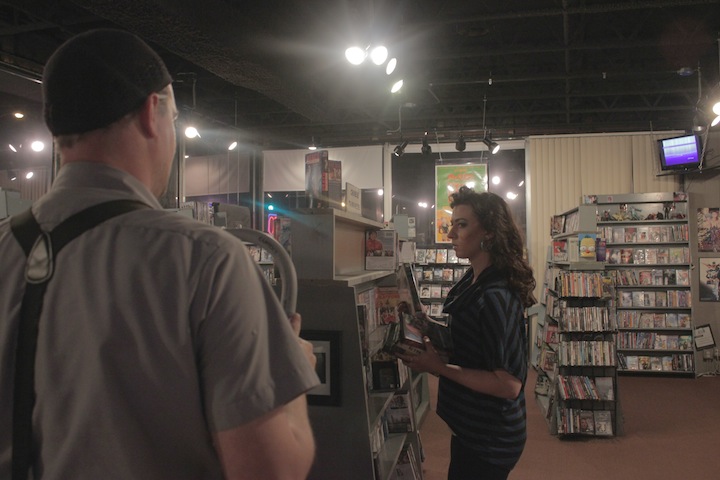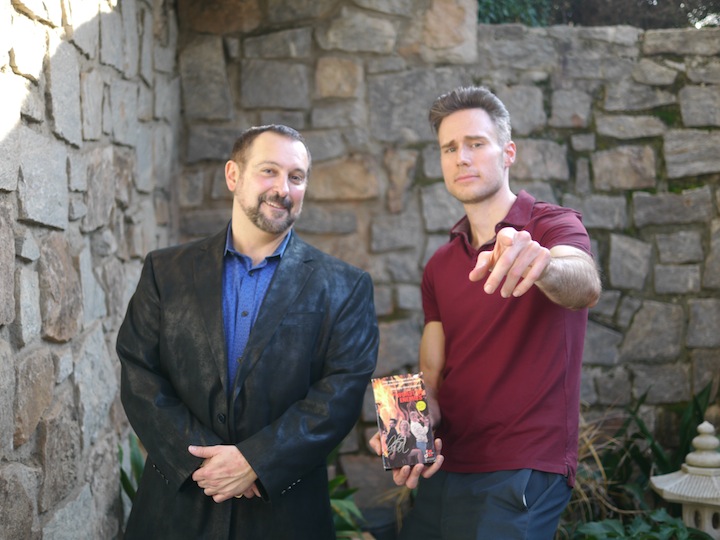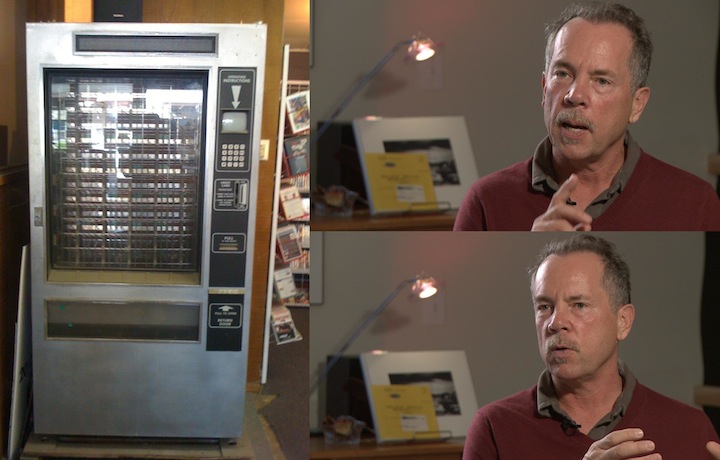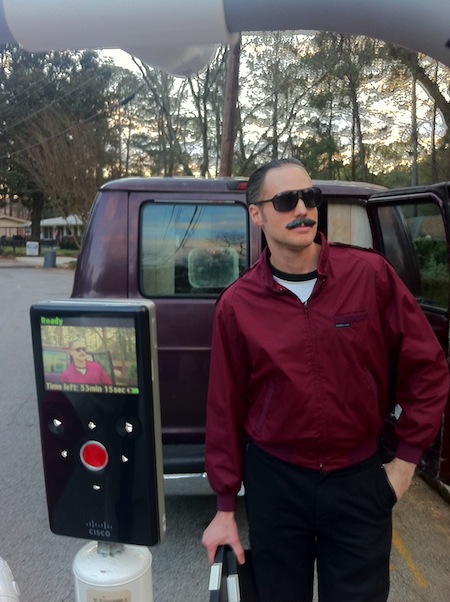 By Andrew Kemp
By Andrew Kemp
Contributing Writer
The Atlanta Film Festival kicks off this Friday with 10 days of screenings and events and, as usual, plenty of local talent will have their work on display. Among the screenings is the new Southern Gothic horror film, THE UNWANTED, written and directed by local badass Bret Wood, and playing on Monday, March 31 at 9:30 pm at The Plaza Theatre. Wood has had a long career in and among the movies, finding time to direct darkly erotic features like PSYCHOPATHIA SEXUALIS (2006) and THE LITTLE DEATH (2010) when he’s not knee deep in the business of film restoration and distribution as vice president of special projects at Kino Lorber. Wood also devotes time to researching and writing about cinema history. Among his credits as a writer and editor is an edition of the QUEEN KELLY (1929) screenplay by the legendary Erich von Stroheim; HELL’S HIGHWAY, a documentary about those infamous highway safety films; and a book on exploitation cinema appropriately titled FORBIDDEN FRUIT.
With THE UNWANTED, Wood returns to a world of repressed erotic desire. The story, inspired by a famous Sheridan Le Fanu vampire novella, concerns a young woman named Carmilla (Christen Orr) who drifts into a small Southern town on the hunt for a missing loved one. What she finds instead is a sheltered girl named Laura (V/H/S’s Hannah Fierman) held close by her disapproving father (William Katt, THE GREATEST AMERICAN HERO). As Carmilla and Laura become drawn to one another, their passion uncovers a nest of dark family secrets that lead to a bloody, deadly confrontation.
 Wood recently spoke to ATLRetro about his new film and his career exploring in the darker corners of cinema.
Wood recently spoke to ATLRetro about his new film and his career exploring in the darker corners of cinema.
ATLRetro: THE UNWANTED transplants Sheridan Le Fanu’s classic Gothic novella CARMILLA into a Southern Gothic setting. What does moving the location to the South add to the story?
Bret Wood: The change of setting didn’t greatly alter the tone of the story. Rural 19th-century Ireland is not SO different from modern-day rural Georgia. The key thing is that, in both versions, events unfold in an isolated setting in which the people are somewhat disconnected from the world around them. That sort of geographic space tends to mirror itself in the psychology of those who live there – isolated, insulated, and not in touch with the world beyond the community. It can be very comfortable to live in a place like that – surrounded by people who share your values – but a certain closed-mindedness is almost inevitable. A suspicion of outsiders, a distrust of those who are guided by a different moral compass, a setting in which a visitor would be immediately viewed with suspicion.
And the ingredients of the Gothic work just as well in the 21st Century as the 19th: themes of a family curse, a poisoned bloodline, dreams haunted by spirits, the sublime beauty of nature, the decaying family estate, the menacing lord of the manor. We just did it without corsets, carriages and candelabras.
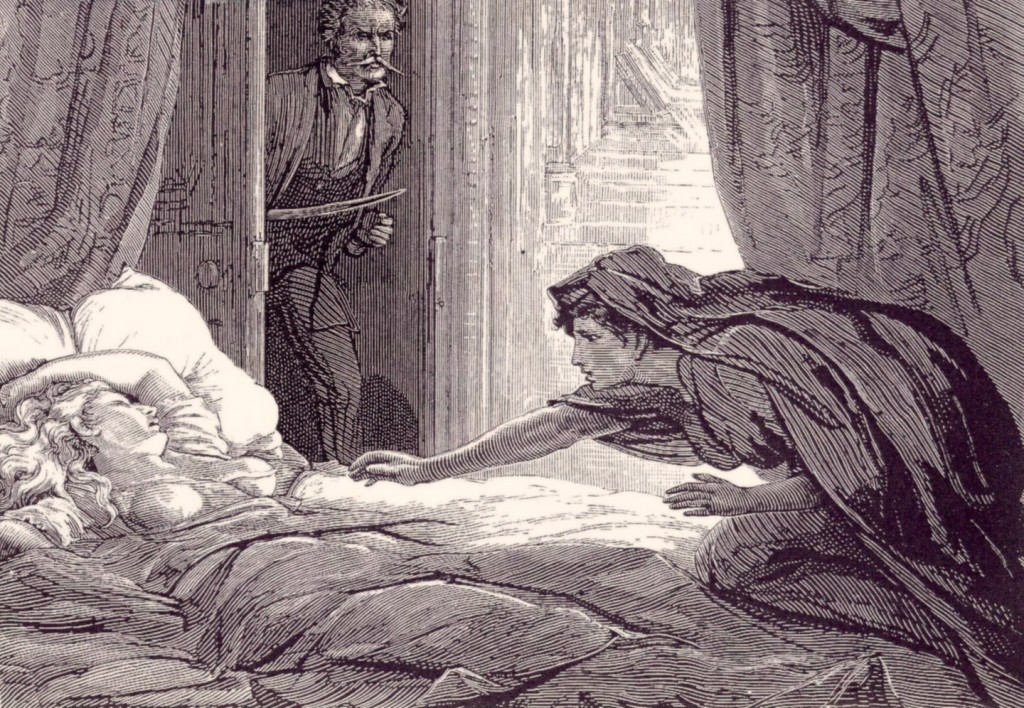
Engraving from a 19th century edition of CARMILLA.
Your film takes a very naturalist approach to CARMILLA’s horror elements. Can you talk about the process of adapting the story away from the supernatural while retaining its core?
I love Le Fanu’s story, but I don’t believe in the supernatural – and I didn’t want to make a movie about something that I don’t believe in. So I had to find a plausible variation on conventional vampirism. There’s no such thing as vampires in the sense of a person becoming immortal or being capable of transforming into an animal, but there ARE people who engage in recreational bloodletting. My 2006 movie, PSYCHOPATHIA SEXUALIS, dramatizes two real-life examples from the Victorian era in which the exchange of blood was a sort of sex substitute.
So the challenge was to create a form of emotionally-charged bloodletting that two people might engage in – and this bloodplay could, from an outsider’s perspective, appear to be vampirism. In my version of vampirism, the blood isn’t for drinking. I’ll leave it at that. People will just have to see the movie.
Your film grapples with gender and gay/lesbian themes in the midst of a horror tale. How does the horror genre help you to tackle these types of important contemporary issues?
Even though it does have lesbian/bisexual characters, I wouldn’t necessarily call THE UNWANTED an LGBT film. It deals with a more universal experience: the choice between staying in one place and following the traditions and values of one’s family, versus cutting the emotional cord and following one’s own path. Conformity versus individuality.
 You might say that THE UNWANTED is about the painful process of “coming out” – whether from an emotional cocoon or the closet. On second thought, maybe it’s more of an LGBT film than I thought.
You might say that THE UNWANTED is about the painful process of “coming out” – whether from an emotional cocoon or the closet. On second thought, maybe it’s more of an LGBT film than I thought.
As far as horror goes, I had to tread a narrow line. In CARMILLA, the horror lies in the lesbianism of the two central characters -Le Fanu only suggests that they are lovers. And in my retelling, the father still needed to perceive the lesbian relationship as monstrous, but it was crucial that the audience view the relationship as loving and harmonious, even when there’s blood flowing between them.
For a while, I thought about calling the film WATER AND BLOOD to contrast the difference between friendships vs. family relationships, but I figured that was stretching the blood symbolism too far.
THE UNWANTED stars William Katt in a fairly dark and menacing role. How did he come to be involved in the project and what did he bring to the character?
I met him through executive producer Eric Wilkinson, who had worked with him a couple of times (THE MAN FROM EARTH (2007), SPARKS (2013)), and who told me Bill enjoys working on indie projects. He was very enthusiastic about the script, and had a significant impact upon the role. Originally, the character of Troy (Laura’s father) was an unequivocal villain, whose purpose it was to thwart Carmilla. Bill cultivated Troy’s human side, asked me to write a scene in which Troy and Laura spend time together, so we see they have a healthy, loving relationship. That was the inspiration for the horseback riding scene.
 To Bill, as an actor, it was always important that the audience understand that Troy loves his daughter, and loved his wife, and the acts of violence he commits arise from his genuine desire to protect them. This inner conflict really shines through in his performance. And it’s so effective that we decided to further downplay his villainy by removing at least one really creepy sequence – which will no doubt appear on the DVD. We decided that rather than showing the audience what horrors this guy is capable of, we should let them wonder.
To Bill, as an actor, it was always important that the audience understand that Troy loves his daughter, and loved his wife, and the acts of violence he commits arise from his genuine desire to protect them. This inner conflict really shines through in his performance. And it’s so effective that we decided to further downplay his villainy by removing at least one really creepy sequence – which will no doubt appear on the DVD. We decided that rather than showing the audience what horrors this guy is capable of, we should let them wonder.
You’ve had a role in restoring and championing classic movies through your work at the Blu-Ray and DVD distributor Kino Lorber. Is there an overlooked title you would recommend, perhaps one that would make a nice pairing with THE UNWANTED?
I love classic film – the older the better – and am lucky that I get to spend much of each day mastering, packaging and writing about great films, whether it’s silent American films or European horror cinema of the 1960s and ’70s. I was watching a lot of Jean Rollin while working on THE UNWANTED, and would say that traces of his 1975 film LIPS OF BLOOD definitely found their way into my movie. Bill Gunn‘s erotic vampire film GANJA AND HESS (1973) and Jess Franco‘s FEMALE VAMPIRE (1973) were big influences as well. All of them were made by indie filmmakers with limited resources, but who attempted to dig deep into complex emotions that don’t get touched by the typical horror film. And, lest you think I was only influenced by vampire films, you don’t have to look to hard to find shades of Michael Haneke‘s THE PIANO TEACHER (2001) or Rouben Mamoulian‘s APPLAUSE (1929). Did I mention I love my job?
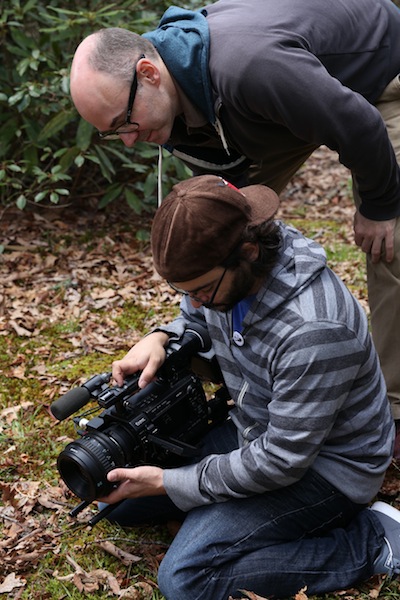
Bret Wood on the set of THE UNWANTED.
Between THE UNWANTED and your earlier films, PSYCHOPATHIA SEXUALIS and THE LITTLE DEATH, you’ve explored sex on the fringes. What draws you to the subject?
I’m sure the short answer to that question lies in my conservative, religious upbringing. But let’s not get into that.
Regardless of how I became the way I am, I will say that, to me, the most fascinating thing about sex – in films – is not the nudity or the act of copulation, but the mystery surrounding the act – sex as a revelatory experience – maybe I’m still channeling the curiosity of my thirteen-year-old self. There’s nothing less erotic than gratuitous nudity. There’s nothing more boring than a sexually active character with no inhibitions, for whom sex is simply a physical act of pleasure. Where’s the drama in that?
I’m fascinated by the psychology of sexuality, by the fringe-dwelling people for whom sex has mutated into something slightly abnormal. By the person who is emotionally tight-wound, who is struggling against their own repression, or struggling against moral oppression, looking for some means by which they can relieve this overwhelming urge that’s gnawing at them from the inside. THAT’S interesting to me. There’s mystery there. And conflict. And tension.
You co-authored a book on exploitation cinema titled FORBIDDEN FRUIT. Exploitation films were meant to be cheap and disposable, and yet they linger on in our film culture. What should we learn from that?
One never knows which films will stand the test of time. Look back at all the lousy Oscar-winners in the past 20 years and you’ll know what I mean. The films celebrated by one generation will be dismissed by the next and vice versa.
Exploitation films of the 1930s and ’40s – sensationalized treatments of hot-button topics like venereal disease, drug abuse, prostitution, polygamy -were crude and, on the surface, badly made. But they were tackling subjects the major studios wouldn’t touch, and they were made with a sort of reckless creativity that is a welcome change from the restraint and technical perfection of a studio film of the same era. In the same way, people who are into horror films are nowadays attracted to the schlock of the 1960s and ’70s, the grindhouse fodder once casually dismissed as garbage. And the same goes for 16mm classroom films of the 1950s – ’70s. Maybe it’s because today’s DIY filmmakers can relate to the struggles of no-budget production, maybe it’s a reaction against the over-produced, over-budgeted, over-hyped films that are suffocating the multiplex.
 When I was a kid, I wanted to be a paleontologist. Part of me today still thinks that way, I love sifting through film history to see what treasures I can find buried in the mud.
When I was a kid, I wanted to be a paleontologist. Part of me today still thinks that way, I love sifting through film history to see what treasures I can find buried in the mud.
What’s next for you?
I have several scripts I’d love to make – for example, a dark comedy about a womanizing stage magician (IN HER RIGHT MIND), a drama about a psychiatric hospital in the 1960s (THE CONTROL GROUP). And there are others. For me, writing is relatively easy. The difficult thing is raising the funds to actually make something. I usually keep a handful of scripts ready to film, and then choose which project to pursue based on the resources available to me. Right now the front-runner is a grim ghost story/revenge film, based on 19th-century literature, very much in the same vein as THE UNWANTED.
THE UNWANTED screens at the Atlanta Film Festival on Monday, March 31, at 9:30 pm at The Plaza Theatre. Tickets for the screening may be purchased here.
Andrew Kemp is a screenwriter and game designer who started talking about movies in 1984 and got stuck that way. He can be seen around town wherever there are movies, cheap beer and little else.
 EIGHT (2014); Dir. Peter Blackburn; Starring Libby Munro; Screened at the Atlanta Film Festival, IMDB.
EIGHT (2014); Dir. Peter Blackburn; Starring Libby Munro; Screened at the Atlanta Film Festival, IMDB. The film doesn’t reveal much about Sarah. We see she has an absent family, but we never learn what triggered her condition or how long it’s been with her. What we know for certain is that she wants to get better. Her house is papered with encouraging notes, and an occasional caller checks in with her progress over an answering machine. With this knowledge every lapse, every small mistake that repeats a cycle becomes all the more tragic. Sarah is not insane, she’s ill. She’s fully aware of her condition, but trapped by it, and EIGHT honors the grip of her illness by refusing to cut away from it. Indeed, EIGHT is shot as a single, uninterrupted take that keeps Sarah in the frame for almost all of the film’s 82 minutes. Far from being a showy gimmick, EIGHT’s ambitious single-take style is essential to the understanding of what the film wants to convey. Sarah has no escape, and the film provides a small glimpse of what it means to actually live that kind of life. The film can be brutal, unflinching, and, quite frankly, difficult to watch, but it evokes sympathy for mental illness in a way a more traditional film could not. Unlike other famous one-shot films (ROPE, BIRDMAN), there is no editing trickery on display. It actually is one single, punishing take providing only rare moments of audience relief (words cannot express my gratitude when the camera decided not to stay on Sarah for a third painful, compulsive shower. The camera instead chooses that moment to glide past pictures of the family Sarah has lost to her illness, twisting the knife in another way.)
The film doesn’t reveal much about Sarah. We see she has an absent family, but we never learn what triggered her condition or how long it’s been with her. What we know for certain is that she wants to get better. Her house is papered with encouraging notes, and an occasional caller checks in with her progress over an answering machine. With this knowledge every lapse, every small mistake that repeats a cycle becomes all the more tragic. Sarah is not insane, she’s ill. She’s fully aware of her condition, but trapped by it, and EIGHT honors the grip of her illness by refusing to cut away from it. Indeed, EIGHT is shot as a single, uninterrupted take that keeps Sarah in the frame for almost all of the film’s 82 minutes. Far from being a showy gimmick, EIGHT’s ambitious single-take style is essential to the understanding of what the film wants to convey. Sarah has no escape, and the film provides a small glimpse of what it means to actually live that kind of life. The film can be brutal, unflinching, and, quite frankly, difficult to watch, but it evokes sympathy for mental illness in a way a more traditional film could not. Unlike other famous one-shot films (ROPE, BIRDMAN), there is no editing trickery on display. It actually is one single, punishing take providing only rare moments of audience relief (words cannot express my gratitude when the camera decided not to stay on Sarah for a third painful, compulsive shower. The camera instead chooses that moment to glide past pictures of the family Sarah has lost to her illness, twisting the knife in another way.)












